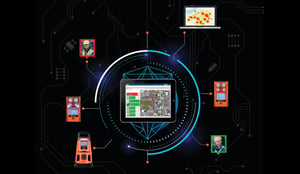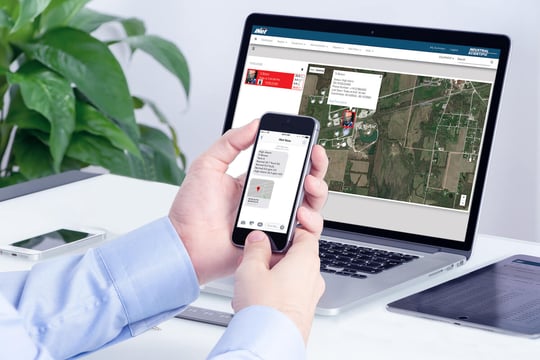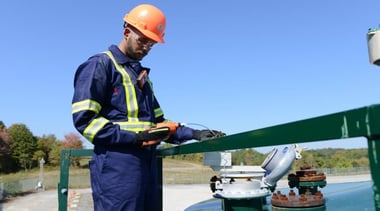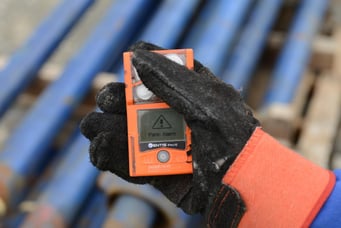Instant visibility is the ultimate goal of any modern workplace safety solution. Visibility into the hazards faced by workers allows your company to be proactive and avoid risk. With this in mind, it’s no surprise that businesses in industrial environments are turning to connected safety solutions. These solutions offer real-time alerts and analytics that help you improve safety, reduce risk, and boost productivity.
Despite the trend toward visibility, many C-level executives struggle to convey its importance to workers. While it’s easy to overlook the necessity of this type of visibility, decisions made at the top cause a ripple effect that reaches the bottom.
Even if your safety professionals have already applied a connected safety solution in the workplace, you can maximize its success with a few simple steps.
CONSIDER YOUR EMPLOYEES
Although significant consequences are reason enough to adopt a hands-on approach to safety and health performance, nothing should top your desire to protect your employees. Your workers are the lifeblood of your business, but people have value that isn’t tied to their jobs, which is why protecting their lives is essential.
Your company should do everything in its power to ensure every worker returns home at the end of the day, alive and unharmed. Even if there was no financial benefit to building a safer workplace, you should feel morally obligated to build one.
THE BUSINESS VALUE OF CONNECTED SAFETY

Although American workplaces are safer than they have ever been, workers are still sustaining significant injuries while on the clock. According to the Bureau of Labor Statistics, 5,333 workers died on the job in 2019. This is, on average, more than 100 fatalities per week or about 15 fatalities every day.
These incidents can wreak havoc on your budget, resulting in losses from decreased productivity. There are also hospital bills, workers’ compensation payments, and other expenses to account for.
Injuries are also often examined by occupational health and safety inspectors. This can result in penalties ranging from $13,260 to $132,598 for each non-compliance occurrence. In 2018 alone, businesses accumulated $52.4 billion in wage and productivity losses. These costs add up, making any worker injury or illness quite expensive.
Make sure that your organization has a connected safety solution to address workplace hazards. By doing this, you can protect your bottom line and your workers.
For example, a complete connected safety solution includes pairing gas detectors with cloud-based software that offers real-time site analytics and worker status updates. This gives safety managers the awareness to reduce risk and manage productivity while also maximizing your return on investment. Executives can also access these analytics to get a high-level overview of site safety and productivity.
However, simply having a connected safety solution isn’t going to add value if your workers aren’t properly and regularly trained on how to use the gas detection equipment.
TRAINING FOR CONNECTED SAFETY NEVER ENDS
Visibility only matters if you act on it. If a gas detector’s alarm sounds and nobody acts, then the alert is pointless. If there’s a man-down alarm and nobody responds (or there’s a delayed response) then the alarm didn’t make your workplace any safer.

Workplace safety isn’t a power switch you can turn on and forget about. It’s something to maintain every moment of every day.
As a C-level executive, it’s not enough to be compliant. You must take a proactive approach to managing safety. Make it your goal to understand the impact of every safety-related decision made for your business.
Make sure your organization is taking connected safety seriously by investing in regular training for all workers. Proper training can minimize three common failures of a connected gas detection program:
- Misunderstanding alerts: Gas detectors come equipped with alarms and alerts that make noise, vibrate, and flash to warn workers about different hazards. If your workers don’t know the difference between these sounds and lights, accidents will be more frequent.
- Disregarding alerts: It’s not unheard of for operators to believe they know more than their gas monitors. Someone who’s been working at your plant for years might ignore an alarm or think, “That’s nothing to worry about yet.” This mentality causes more frequent incidents.
- Failing to act on alerts: Being proactive is essential to safety. Safety managers should always address alerts and intervene when workers show unsafe behaviors before they turn into disasters. Ensure that your safety teams analyze collected data to recognize alarm patterns.
Organizations that show genuine effort when it comes to worker training are much more likely to reduce injuries on the clock. However, no matter how good your training was, memories fade over time and bad habits can return. Ideally, you should ensure all workers receive initial training for their gas detection equipment and schedule refresher courses each year.
SAFETY LEADERSHIP
It might not always feel like it, but you influence your organization’s safety climate and can impact worker injury rates. A study of 54 organizations showed that greater support for safety resulted in fewer employee injuries.
To enhance the effectiveness of connected safety, you should focus on four areas:
- Vision: Have a vision for what you want to achieve with safety in your organization. This can help you articulate shared safety goals for all levels of your company.
- Personal commitment: Display visible and sincere dedication to workplace safety and demonstrate care for the welfare of your employees.
- Decision-making: Ensure that any safety concerns are heard and addressed. Also, include employees in the safety planning process.
- Transparency: Being transparent when it comes to safety performance can encourage continuous improvement. Celebrate successes but also communicate any safety challenges to develop better practices.
Even if you won’t manage the ins and outs of your company’s connected safety program, it’s still your responsibility to understand how it can create a safer, more productive workplace for your employees.



